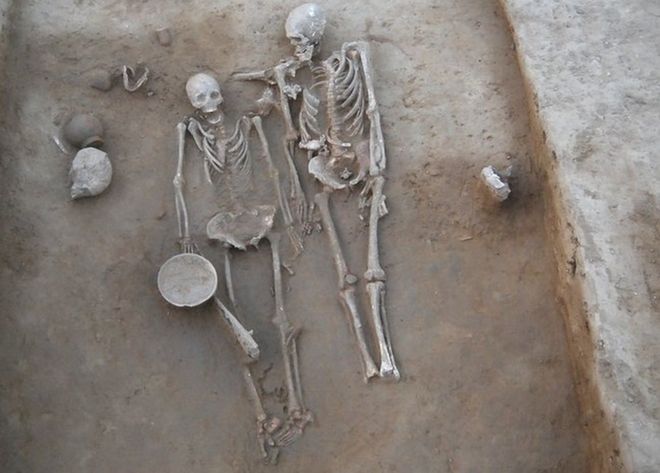About 4,500 years ago, a man and a woman were buried in a grave together in a sprawling cemetery on the outskirts of a thriving settlement of one of the world’s earliest urban civilisations.
In 2016, archaeologists and scientists from India and South Korea found these two “very rare” skeletons in a Harappan (or Indus Valley) city – what is now Rakhigarhi village in the northern Indian state of Haryana. For two years, they researched the “chronology” and possible reasons behind the deaths; and the findings have now been published in a peer-reviewed international journal.
“The man and the woman were facing each other in a very intimate way. We believe they were a couple. And they seemed to have died at the same time. How they died, however, remains a mystery,” archaeologist Vasant Shinde, who led the team, told me.
They were buried in a half-a-metre-deep sand pit. The man was around 38 years old at the time of his death, while the woman was around 35. Both were reasonably tall – he was 5.8ft (1.77m) and she, 5.6ft. They were both possibly “quite healthy” when they died – tests didn’t find any lesions or lines on the bones or any “abnormal thickness” of skull bones, which could hint at injuries or diseases such as brain fever.













